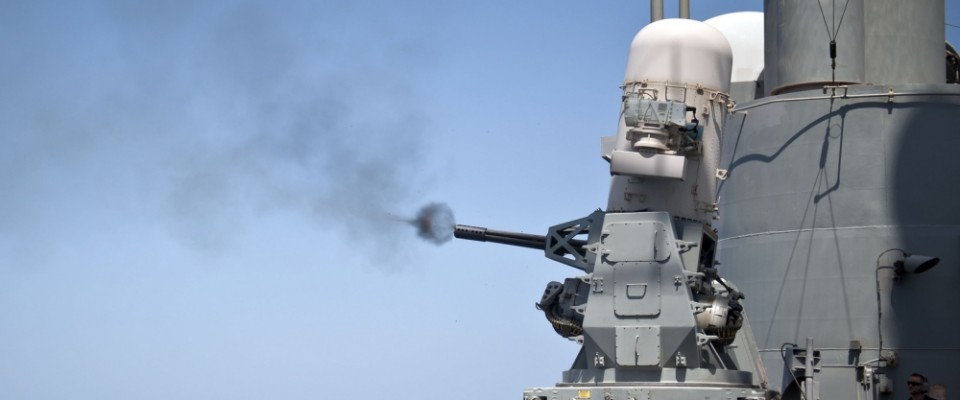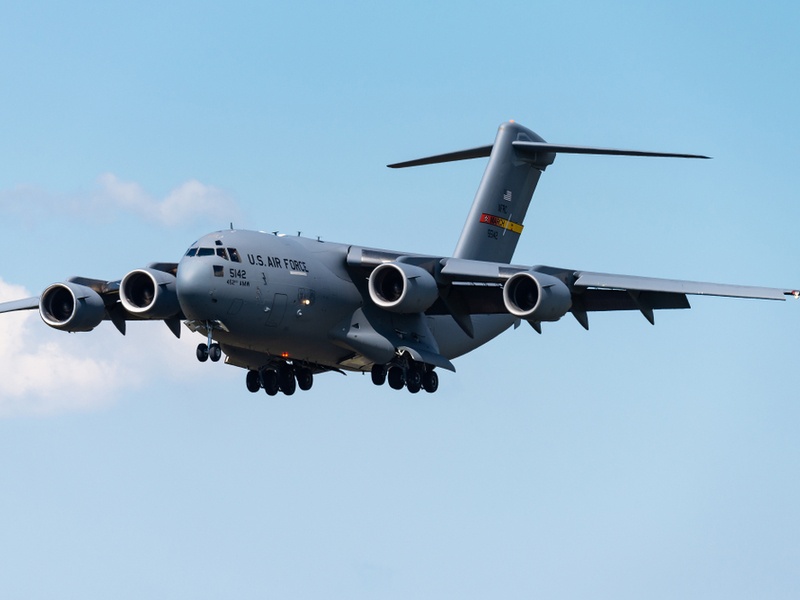
Precision Mechanisms products/cam switches are major component(s) found in the Navy’s defense system known as the Phalanx CIWS.
What is the Phalanx CIWS?
The Phalanx CIWS (pronounced "sea-wiz") is a close-in weapon system for defense against incoming threats such as small boats, surface torpedoes, anti-ship missiles and helicopters. It was designed and manufactured by the General Dynamics Corporation, Pomona Division, later a part of Raytheon. Consisting of a radar-guided 20 mm (0.8 in) Vulcan cannon mounted on a swiveling base, the Phalanx has been used by the United States Navy and the naval forces of 15 other countries. The US Navy deploys it on every class of surface combat ship, except the Zumwalt-class destroyer and San Antonio-class amphibious transport dock. Other users include the British Royal Navy, the Royal Australian Navy, the Royal Canadian Navy and the US Coast Guard (aboard its Hamilton- and Legend-class cutters).
A land variant, known as the LPWS (Land Phalanx Weapon System), part of the C-RAM system, has recently been deployed in a short-range missile defense role, to counter incoming rockets, artillery, and mortar fire. The U.S. Navy also fields the SeaRAM system, which pairs the RIM-116 Rolling Airframe Missile with sensors based on the Phalanx.

Precision Mechanisms cam switches are major components found in the Boeing C-17 Globemaster III Tactical Transport Aircraft
The Boeing C-17 Globemaster III is a strategic transport aircraft, able to airlift cargo close to a battle area. The size and weight of U.S. mechanized firepower and equipment have grown in recent decades from increased air mobility requirements, particularly for large or heavy non-palletized outsize cargo. It has a length of 174 feet (53 m) and a wingspan of 169 feet 10 inches (51.77 m), and uses about 8% composite materials, mostly in secondary structure and control surfaces.
The C-17 is powered by four Pratt & Whitney F117-PW-100 turbofan engines, which are based on the commercial Pratt and Whitney PW2040 used on the Boeing 757. Each engine is rated at 40,400 lbf (180 kN) of thrust. The engine's thrust reversers direct engine exhaust air upwards and forward, reducing the chances of foreign object damage by ingestion of runway debris, and providing enough reverse thrust to back up the aircraft while taxiing. The thrust reversers can also be used in flight at idle-reverse for added drag in maximum-rate descents. In vortex surfing tests performed by two C-17s, up to 10% fuel savings were reported.
For cargo operations the C-17 requires a crew of three: pilot, copilot, and loadmaster. The cargo compartment is 88 feet (27 m) long by 18 feet (5.5 m) wide by 12 feet 4 inches (3.76 m) high. The cargo floor has rollers for palletized cargo, but it can be flipped to provide a flat floor suitable for vehicles and other rolling stock. Cargo is loaded through a large aft ramp that accommodates rolling stock, such as a 69-ton (63-metric ton) M1 Abrams main battle tank, other armored vehicles, trucks, and trailers, along with palletized cargo.
Maximum payload of the C-17 is 170,900 pounds (77,500 kg; 85.5 short tons), and its maximum takeoff weight is 585,000 pounds (265,000 kg). With a payload of 160,000 pounds (73,000 kg) and an initial cruise altitude of 28,000 ft (8,500 m), the C-17 has an unrefueled range of about 2,400 nautical miles (4,400 kilometers) on the first 71 aircraft, and 2,800 nautical miles (5,200 kilometers) on all subsequent extended-range models that include a sealed center wing bay as a fuel tank. Boeing informally calls these aircraft the C-17 ER. The C-17's cruise speed is about 450 knots (830 km/h) (Mach 0.74). It is designed to airdrop 102 paratroopers and their equipment.
The C-17 is designed to operate from runways as short as 3,500 ft (1,100 m) and as narrow as 90 ft (27 m). The C-17 can also operate from unpaved, unimproved runways (although with greater chance to damage the aircraft). The thrust reversers can be used to move the aircraft backwards and reverse direction on narrow taxiways using a three- (or more) point turn. The plane is designed for 20 man-hours of maintenance per flight hour, and a 74% mission availability rate.